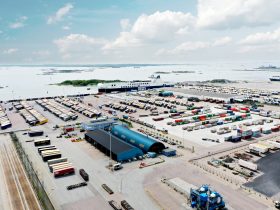
Algeria’s Garment Industry: Overview and Prospects
Algeria’s garment industry, once a cornerstone of the country’s manufacturing sector, has experienced significant challenges and transformation over the past decades. Historically, the textile and apparel industry in Algeria was well-developed, supported by strong domestic demand and a substantial workforce. However, with the liberalization of trade and the influx of cheaper imported clothing, local production significantly declined. Despite these setbacks, recent government initiatives and shifting global supply chains have opened up new opportunities for revitalizing Algeria’s garment sector.
The decline of Algeria’s garment industry began in the 1990s, driven by outdated equipment, lack of investment, and competition from low-cost producers such as China, Turkey, and Bangladesh. Many state-owned enterprises closed or downsized, and production shifted from domestic factories to imported goods. This resulted in a growing reliance on foreign-made apparel to meet local consumer needs. Today, the informal market still dominates clothing sales in Algeria, offering inexpensive products at the cost of formal industry development.
Nevertheless, the Algerian government has identified the textile and garment sector as a strategic industry for economic diversification, job creation, and import substitution. As part of its long-term economic vision, Algeria aims to reduce its dependence on oil and gas by boosting manufacturing and agriculture. The government has taken steps to revive the sector by offering incentives to investors, developing industrial zones, and encouraging public-private partnerships.
One of the most notable developments is the establishment of the Sidi Khettab Textile Industrial Complex, a major joint venture between Algeria and Turkey. Located in the province of Relizane, this complex is expected to become one of Africa’s largest textile production hubs. It is projected to generate thousands of jobs and significantly reduce Algeria’s textile imports. Such initiatives mark a shift toward modern, vertically integrated production systems that can compete in regional and global markets.
Local brands and manufacturers are also beginning to reemerge, driven by increasing consumer awareness and interest in “Made in Algeria” products. Designers are blending traditional Algerian styles with contemporary fashion, appealing to both domestic and diaspora markets. However, the local industry still faces several challenges, including limited access to high-quality raw materials, insufficient training programs for workers, and a need for better marketing and distribution networks.
The potential for growth is strong, especially with the expanding population and rising demand for affordable clothing. Algeria’s strategic location near Europe and access to African markets could also make it a competitive base for garment exports in the future. Strengthening regional integration and trade agreements, such as the African Continental Free Trade Area (AfCFTA), may further open doors for Algerian apparel products.
In conclusion, while Algeria’s garment industry has faced decades of decline, recent reforms and investments signal a hopeful revival. By focusing on modernization, skill development, and strategic partnerships, Algeria has the potential to rebuild its textile and clothing sector into a key contributor to its economy and a significant player in the regional apparel market.


Leave a Reply